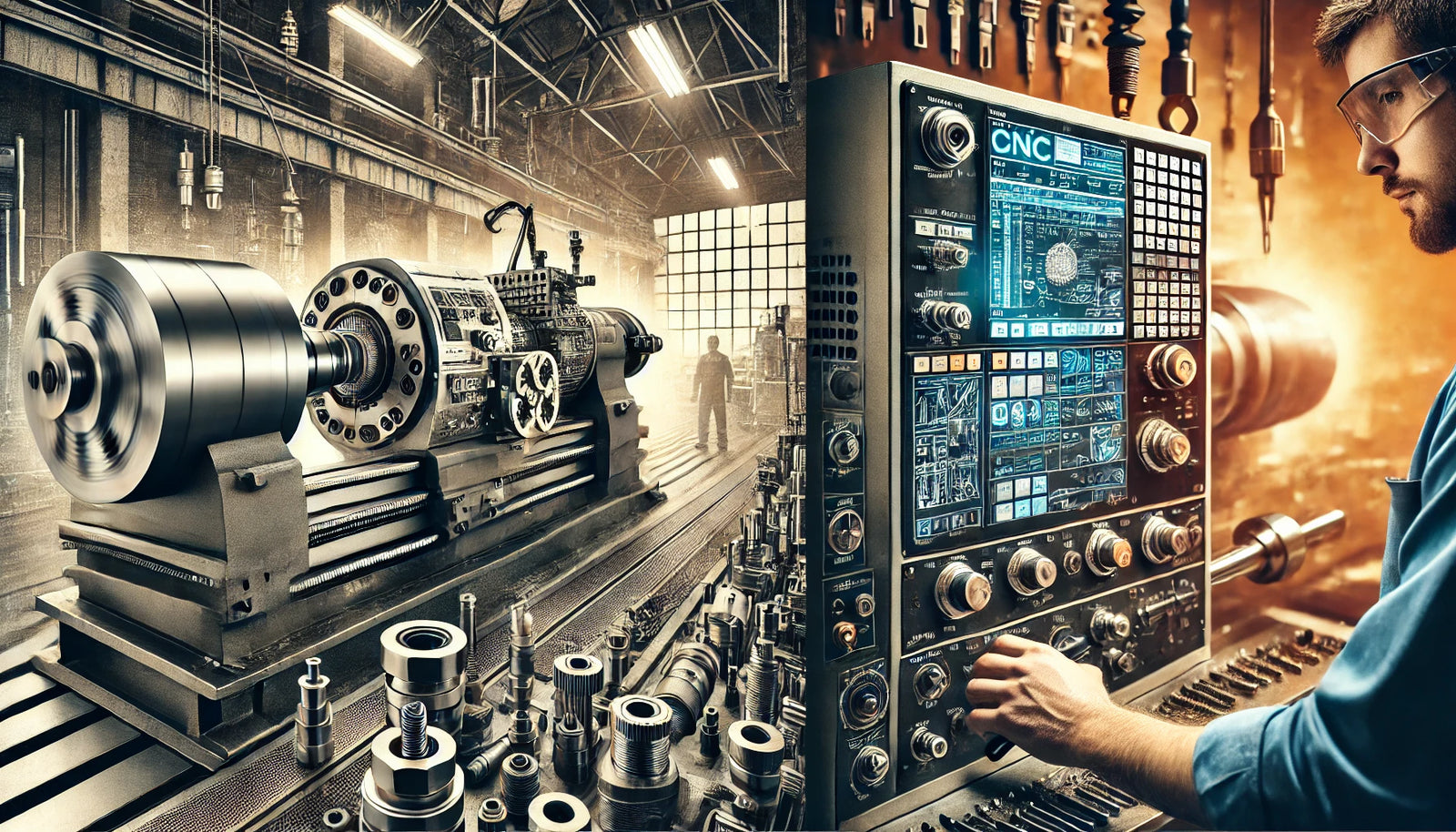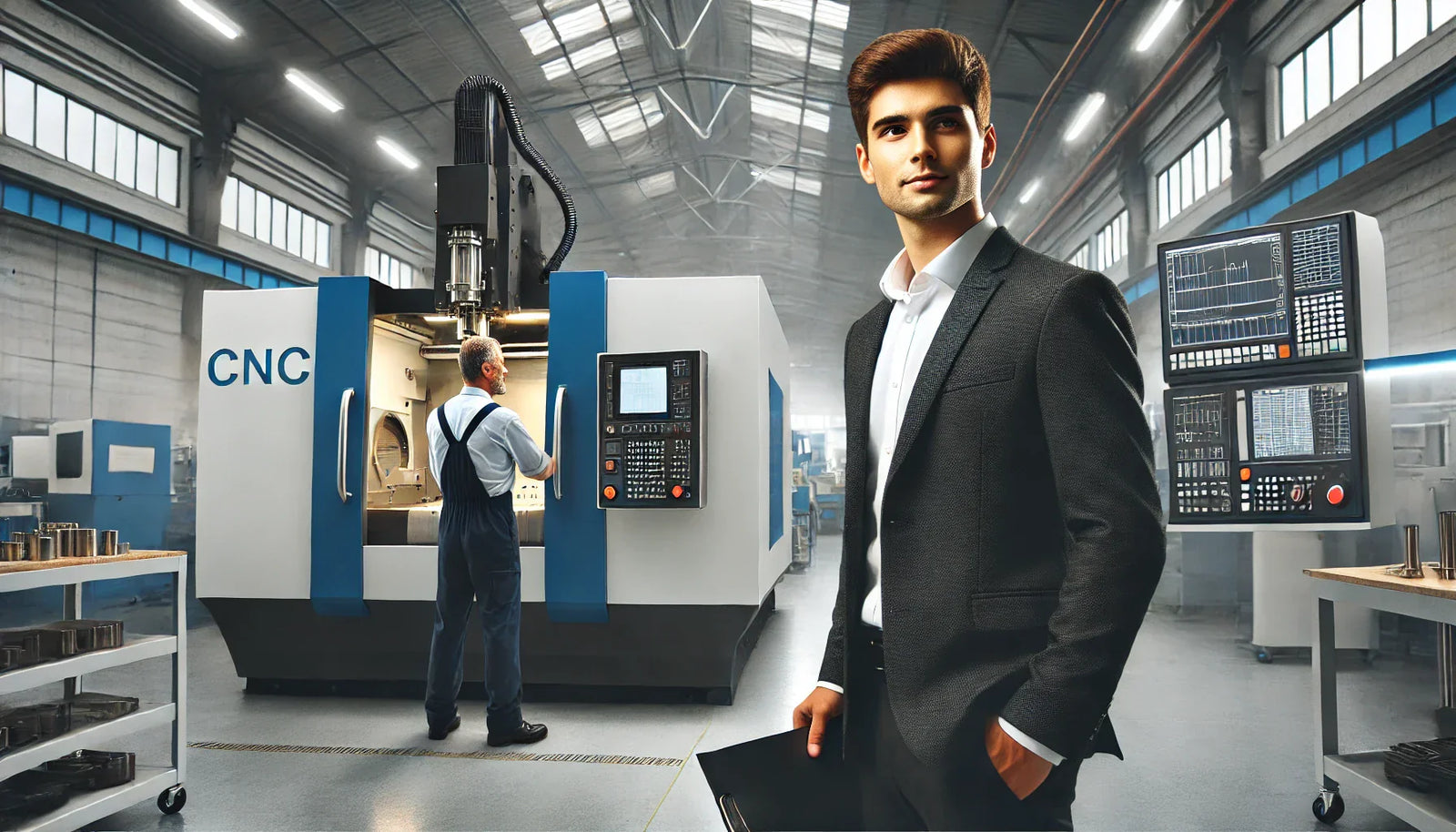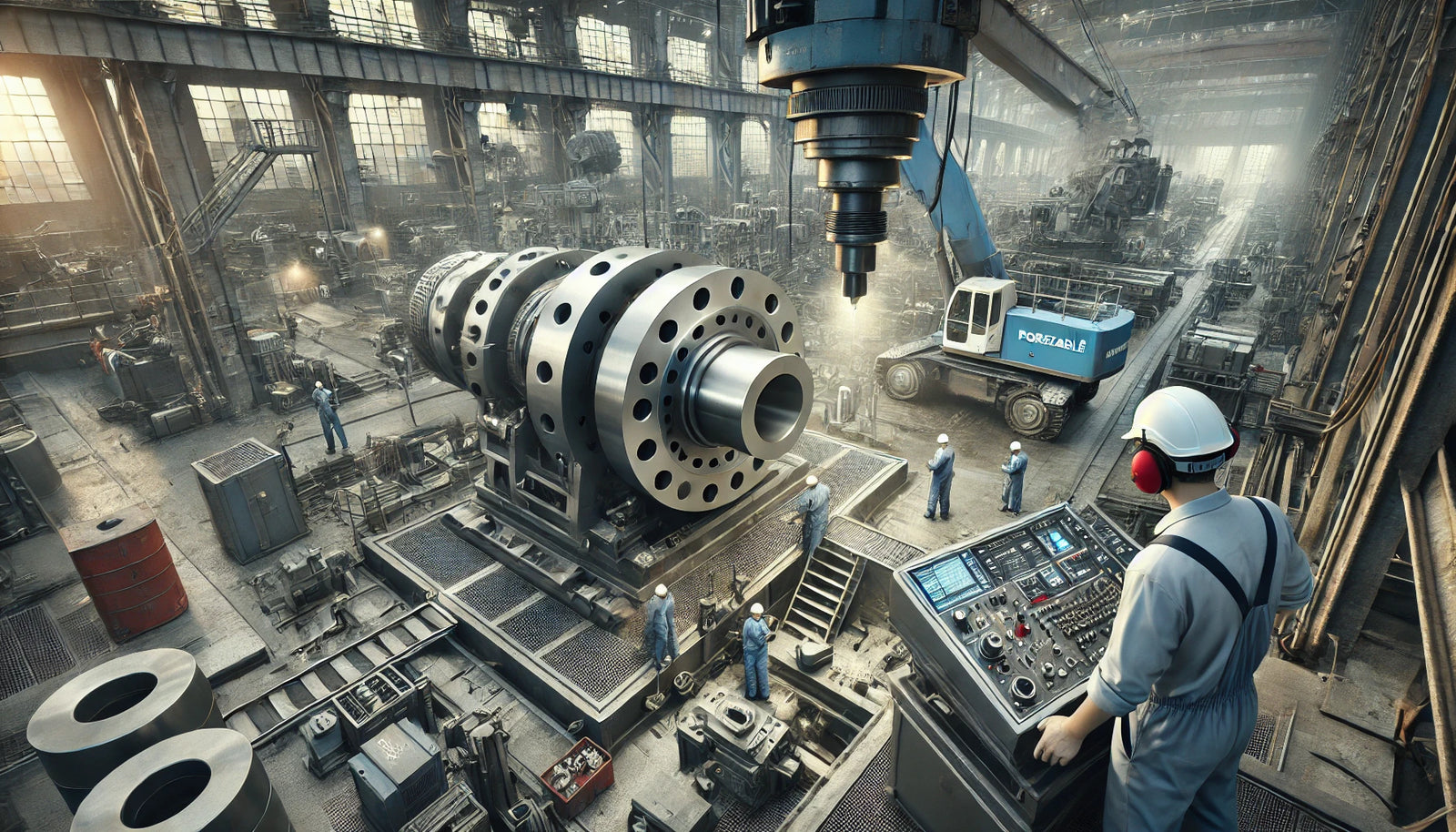CNC vs. Manual Heavy-Duty Lathes: Which is Right for Your Operation?
When it comes to choosing between CNC (Computer Numerical Control) and manual heavy-duty lathes for your metalworking operation, the decision hinges on several key factors. Both CNC and manual lathes have their place in the industry, and understanding their pros and cons can help you determine which is the best fit for your specific needs.
Here’s a breakdown of CNC automation versus manual operation for heavy-duty lathes.
Advantages of CNC Heavy-Duty Lathes
1. Precision and Consistency
CNC lathes excel in delivering repeatable accuracy across multiple workpieces. Since they are computer-controlled, the machine consistently executes precise cuts and turns with minimal human error. This precision is crucial in industries that demand tight tolerances, such as aerospace or automotive manufacturing.
2. Increased Productivity
Once programmed, CNC lathes can run continuously with little operator intervention, leading to significantly higher productivity. These machines can be left to operate unattended, even overnight or during breaks, ensuring maximum utilization of machine hours.
3. Complex Geometries
CNC lathes are capable of creating complex shapes and intricate designs that would be nearly impossible or extremely time-consuming to produce with a manual lathe. Multi-axis CNC lathes allow for advanced machining capabilities, such as contouring and threading, with seamless transitions between operations.
4. Lower Labor Costs
With CNC lathes, a single operator can oversee multiple machines at once, reducing labor costs over time. The advanced automation means you don’t need highly skilled machinists to perform manual operations—once the program is set, the machine does the rest.
Disadvantages of CNC Heavy-Duty Lathes
1. Higher Initial Investment
CNC lathes tend to be more expensive upfront than manual lathes, requiring a significant capital investment. This can be a barrier for smaller shops or businesses with tight budgets. Along with the machine itself, additional costs for software, programming, and maintenance should be considered.
2. Programming Expertise
CNC lathes require skilled programmers to input the G-code or CAD/CAM instructions. This adds another layer of expertise, as improper programming can lead to mistakes in production. Additionally, any time the program needs to be altered or adjusted, someone with the necessary technical knowledge must make these changes.
3. Maintenance and Downtime
While CNC machines are highly efficient, their complex technology means more can go wrong. When CNC lathes break down, repairs can be costly, and downtime is often longer than with manual lathes due to the specialized nature of the equipment.
Advantages of Manual Heavy-Duty Lathes
1. Lower Initial Cost
Manual lathes are typically much cheaper than CNC lathes, making them an attractive option for shops on a tight budget. The reduced complexity of the machine means fewer expensive parts and simpler maintenance. This lower upfront cost can be particularly beneficial for smaller-scale operations or those just starting out.
2. Hands-On Control
For jobs that require custom, one-off parts, manual lathes offer the operator complete control over the machining process. Skilled machinists can make adjustments on the fly, enabling flexibility that CNC lathes may lack for certain tasks. This makes manual lathes ideal for prototype work or repairs.
3. Lower Maintenance Costs
Since manual lathes lack the advanced electronics and motors found in CNC lathes, they are generally easier and cheaper to maintain. Repairs often require simple mechanical fixes, and downtime is usually minimal.
Disadvantages of Manual Heavy-Duty Lathes
1. Lower Productivity
Manual lathes require a machinist to operate them throughout the entire process, which limits production speed and efficiency. For high-volume production runs, manual machines cannot compete with the rapid throughput of CNC lathes.
2. Limited Complexity
Complex geometries and tight tolerances are much more difficult to achieve on manual lathes. While skilled machinists can still produce high-quality parts, the precision and complexity that CNC machines offer cannot be easily replicated by manual operation.
3. Higher Labor Costs
Operating a manual lathe requires a highly skilled machinist. This adds to labor costs, as skilled workers are more expensive. Additionally, the time it takes to complete each piece is much longer, further increasing costs for larger production runs.
Which is Right for Your Operation?
The choice between CNC and manual heavy-duty lathes comes down to the specific needs of your operation.
- CNC lathes are ideal for high-volume production, complex geometries, and industries requiring precision. If you prioritize productivity, automation, and long-term cost savings, CNC is the way to go.
- Manual lathes shine in low-volume, custom, or one-off jobs where flexibility and hands-on control are important. If your operation requires a lower upfront investment and simple maintenance, a manual lathe may be more appropriate.
Ultimately, both CNC and manual lathes have their unique advantages and trade-offs. Your decision should align with the volume, complexity, and budget of your operation.





